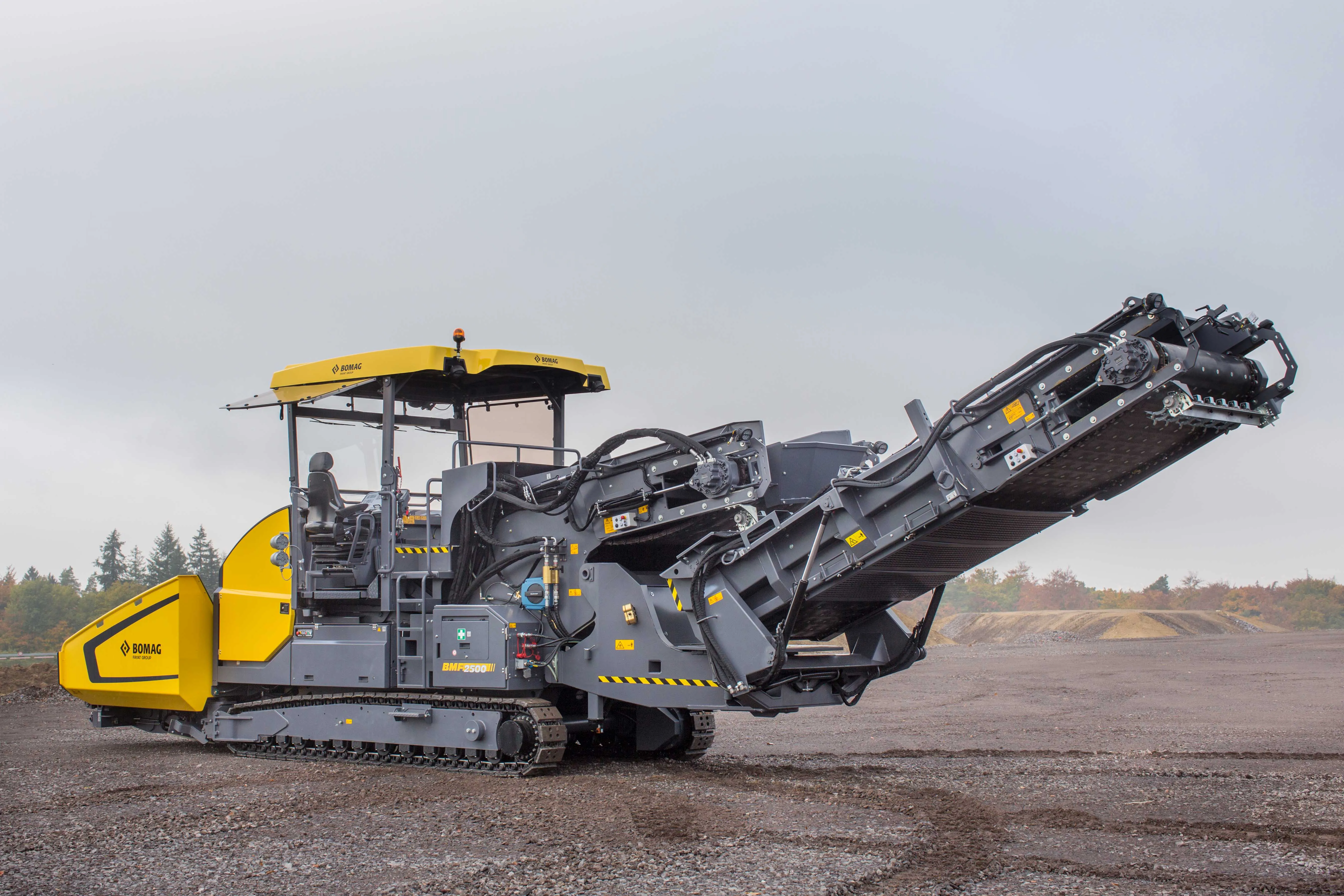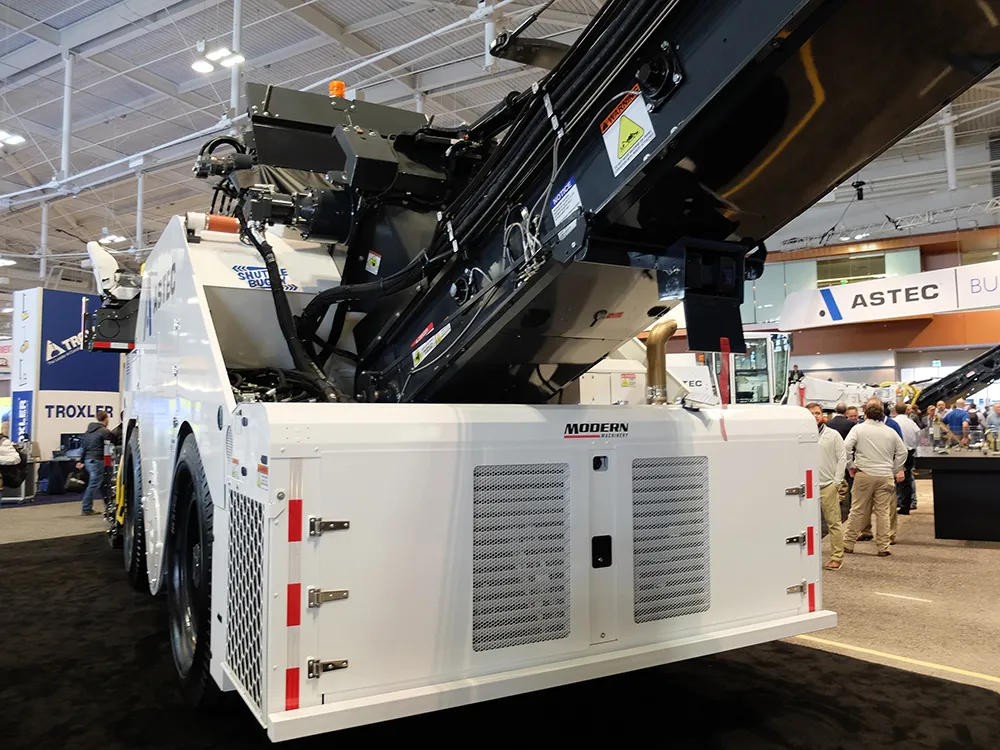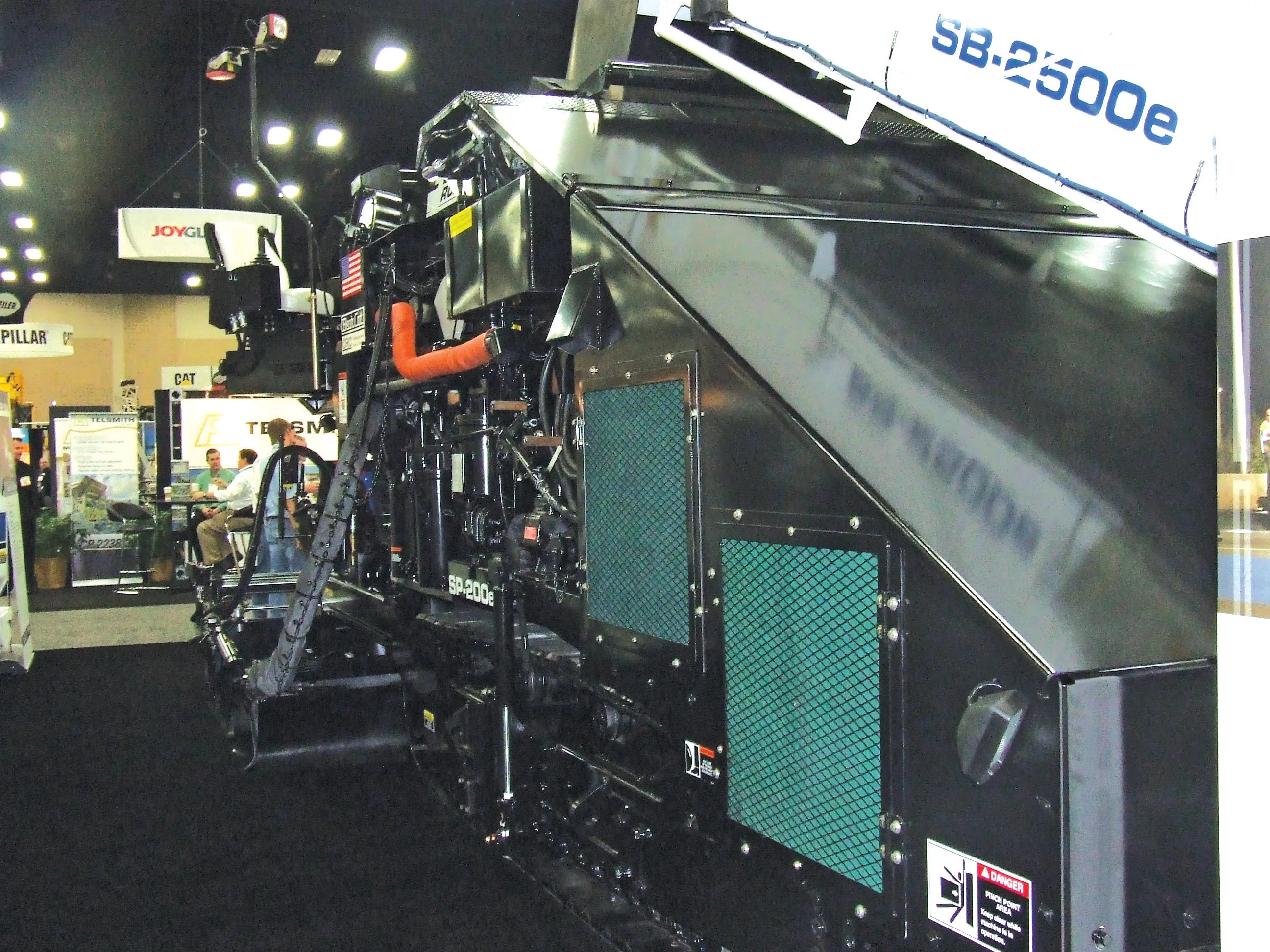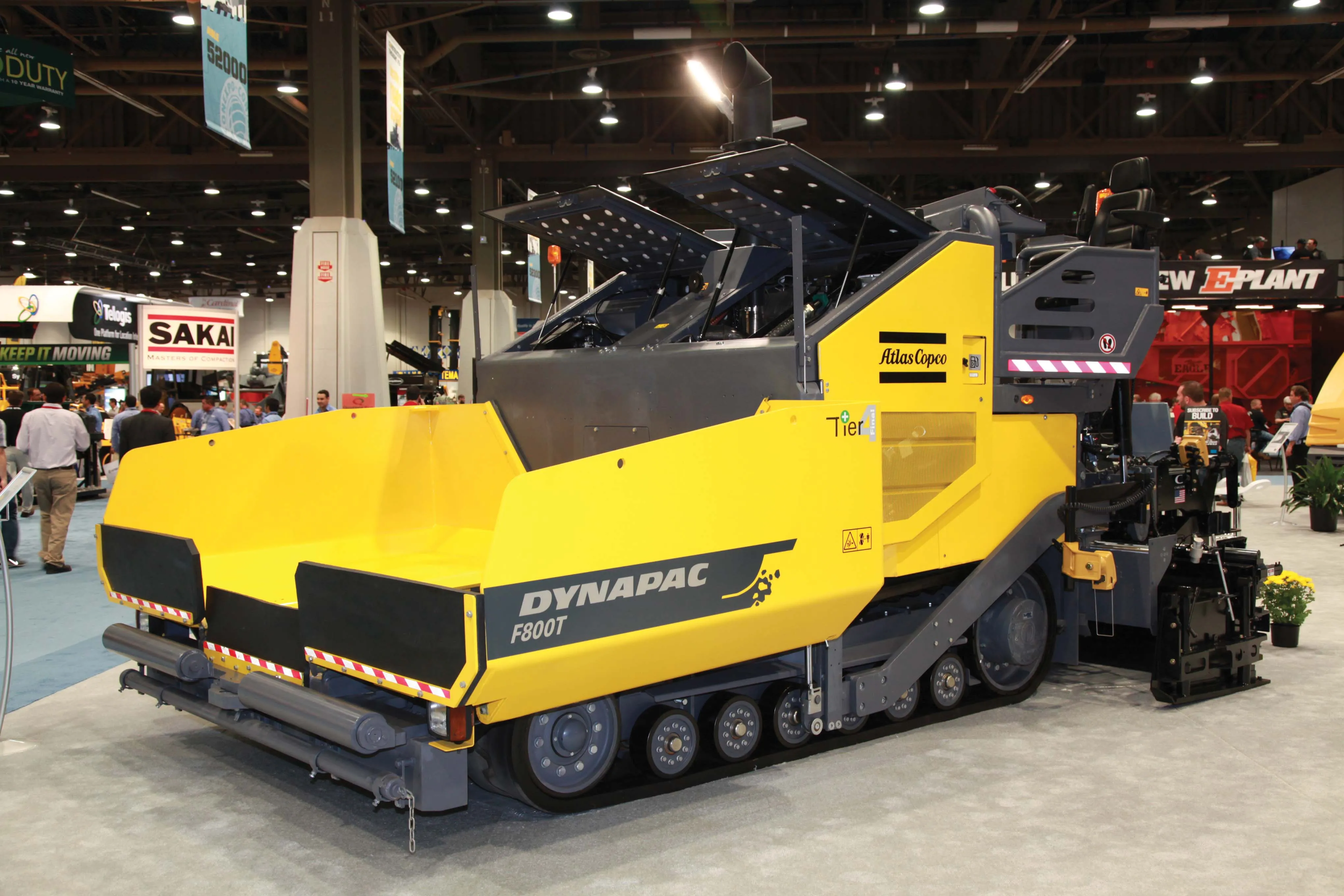When asphalting the inside of the newly raised edge of a water dam, Austrian road construction company Strabag faced a challenge. The paver had to be operated at an angle of between 34-41 degrees with material fed into the hopper from a ledge just 2.8m wide on the edge of the dam.
The Waldeck 2 kidney-shaped hydroelectric station is located on a mountaintop about 500m above sea level on Lake Eder in central Germany. The dam, owned by global energy group E.ON, has a perimeter of about 3km. An important pa
June 10, 2015
Read time: 3 mins
When asphalting the inside of the newly raised edge of a water dam, Austrian road construction company 945 Strabag faced a challenge. The paver had to be operated at an angle of between 34-41 degrees with material fed into the hopper from a ledge just 2.8m wide on the edge of the dam.
The Waldeck 2 kidney-shaped hydroelectric station is located on a mountaintop about 500m above sea level on Lake Eder in central Germany. The dam, owned by global energy group E.ON, has a perimeter of about 3km. An important part of the project involves raising the edge of the dam by 80cm to give a 10% increase in water storage.
Strabag made some simple steelwork, such as seat adjustments and walkway safety modifications for the operators on a206 Dynapac DF145CS paver from 161 Atlas Copco. It was also necessary to modify the material hopper with an extra chamber to keep the material flow constant and avoid material accumulating at one end.
During the paving process, the Dynapac paver laying the asphalt was held in place by the counterweight of a second Dynapac paver that travelled in tandem along the ledge on top of the wall. The active paver was also attached to a hydraulic cylinder that pulled it in the right direction if it tended to stray due to the fluctuating material load in the modified hopper. An Atlas Copco XAS 67 portable compressor mounted on the counterweight paver was used to air-blow the work surface clean from dirt and stones in front of the paver.
The material trucks had to drive to the edge of the dam and reverse up to the working machines. To get the material into the hopper over the edge of the dam, a feeder was needed that could feed sideways yet be sufficiently narrow to operate on the dam’s edge. For this job the Dynapac MF2500CS mobile feeder had an add-on swingable conveyor, SwingApp.
With a basic width of 2.55m, the Dynapac feeder had no problem manoeuvring around the narrow dam edge and, thanks to the swingable conveyor, feeding to the side at an angle of 55 degrees was also no challenge. Although the MF2500CS has a feeding capacity of 4,000tonnes per hour - not necessary in this case - it is still slim enough for this kind of difficult job site condition. It was even possible to fully open the hopper wings.
“We paved 2.55m width at a speed of 1m per minute,” said Gebhard, “So the output was only around 200tonnes per day. When needed, we used the hydraulic screed assist to decrease the pressure of the screed on this bituminous material.”
The Waldeck 2 kidney-shaped hydroelectric station is located on a mountaintop about 500m above sea level on Lake Eder in central Germany. The dam, owned by global energy group E.ON, has a perimeter of about 3km. An important part of the project involves raising the edge of the dam by 80cm to give a 10% increase in water storage.
Strabag made some simple steelwork, such as seat adjustments and walkway safety modifications for the operators on a
During the paving process, the Dynapac paver laying the asphalt was held in place by the counterweight of a second Dynapac paver that travelled in tandem along the ledge on top of the wall. The active paver was also attached to a hydraulic cylinder that pulled it in the right direction if it tended to stray due to the fluctuating material load in the modified hopper. An Atlas Copco XAS 67 portable compressor mounted on the counterweight paver was used to air-blow the work surface clean from dirt and stones in front of the paver.
The material trucks had to drive to the edge of the dam and reverse up to the working machines. To get the material into the hopper over the edge of the dam, a feeder was needed that could feed sideways yet be sufficiently narrow to operate on the dam’s edge. For this job the Dynapac MF2500CS mobile feeder had an add-on swingable conveyor, SwingApp.
With a basic width of 2.55m, the Dynapac feeder had no problem manoeuvring around the narrow dam edge and, thanks to the swingable conveyor, feeding to the side at an angle of 55 degrees was also no challenge. Although the MF2500CS has a feeding capacity of 4,000tonnes per hour - not necessary in this case - it is still slim enough for this kind of difficult job site condition. It was even possible to fully open the hopper wings.
“We paved 2.55m width at a speed of 1m per minute,” said Gebhard, “So the output was only around 200tonnes per day. When needed, we used the hydraulic screed assist to decrease the pressure of the screed on this bituminous material.”









